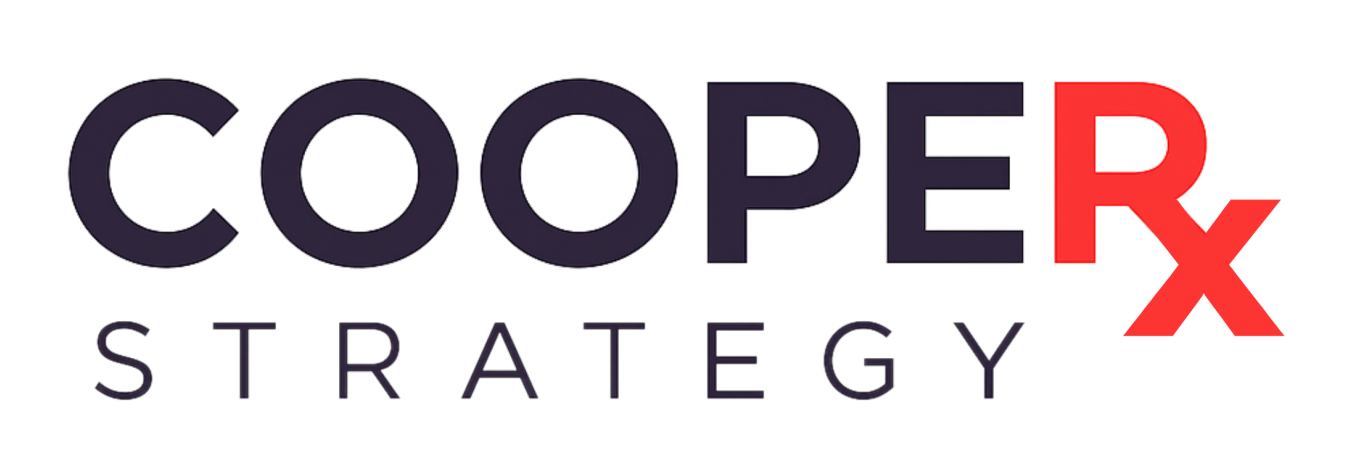Health Centers
Program intent. HRSA describes 340B as enabling covered entities to stretch scarce federal resources to reach more eligible patients and offer more comprehensive services. (HRSA)
Cooper Strategy helps Disproportionate Share Hospitals (DSH), Children’s Hospitals, Free‑Standing Cancer Hospitals, Rural Referral Centers (RRC), Sole Community Hospitals (SCH), Critical Access Hospitals (CAH), and FQHCs/FQHC look‑alikes capture more compliant 340B value—without adding burden to already stretched teams. Our blend of FQHC consultants, technologists, and former CE operators improves cash flow and audit readiness while expanding access for vulnerable patients.
What Counts: The 340B Hospital Definition
"340B hospital definition" refers to the hospital categories defined in statute that qualify for 340B participation (for example: DSH, CAH, RRC, SCH, Children's, and Free‑Standing Cancer hospitals). Each type has distinct eligibility and registration rules, and a hospital eligible in multiple categories must enroll under one category and follow that category's requirements.
If you're unsure where you fit—or how child sites/clinics, cost reports, or the GPO prohibition apply—we'll map your status and next steps using current HRSA guidance and FAQs.
Our 340B Growth System for Hospitals & FQHCs
Purpose‑Built FQHC Revenue Cycle Management for 340B
We align FQHC revenue cycle management with pharmacy operations so finance, pharmacy, and population health pull in the same direction. Outcomes include cleaner eligibility determinations, better accumulator hygiene, faster reconciliation, and fewer reversals—supported by dashboards your CFO will actually use.
Referral Capture with Unique Walgreens Access
Cooper Strategy is one of only two sources available to Covered Entities for Walgreens referral capture assistance. Because Walgreens processes a large share of U.S. prescriptions, unlocking these referrals can materially affect 340B revenue. Our direct access and data pipelines raise qualified capture rates while reducing manual work for your team.
Pharmacy Network Development (We Do the Heavy Lifting)
We analyze claims density, prescriber geography, payer mix, and leakage to add the right contract pharmacies—then handle the paperwork and HRSA registrations. Example: we discovered a client had no CVS contracts in an area with clear overlap; we coordinated and registered 18 CVS locations, which now generate $200,000+ per month to the health center through CVS/Wellpartner.
Telehealth‑Enabled Patient Procurement (Compliant by Design)
We coordinate with self‑insured employers and their PBMs to steer new, unique patients to your health center or hospital—without overwhelming staff. Built‑in compliance via our partner MakoRx includes: CE‑provider contracting, CE ownership of health records, grant‑scope alignment for FQHCs/look‑alikes, and delivery of actual health services beyond drug dispensing via telemedicine.
- Year 1: net just under $2M as volume ramps to protect quality.
- Years 2+: approximately $7M net annually at steady state.
(Results vary by market size, payer mix, and network configuration.)
HRSA 340B Audits: Build "Audit-Ready by Design"
Our comprehensive audit services include:
Compliance Corner (Hospitals & FQHCs)
Patient definition (what auditors look for)
HRSA's 1996 Patient Definition Guidelines continue to guide audits. Documentation should show a clinical relationship (encounter notes, orders), CE responsibility for care, and CE‑maintained records. HRSA has noted that the Genesis v. Becerra decision is applicable solely to that case; your safest posture remains robust encounter documentation.
Dispensing‑only isn't enough
To minimize diversion risk, ensure the patient received health services beyond drug dispensing from or on behalf of the CE and that you maintain auditable records.
Maintain auditable records
Inadequate documentation can lead to findings, repayments, or termination.
How we implement this for you
Record the referral
In the EHR with the referring and referred‑to providers, diagnosis, therapy plan, and dates.
Verify provider encounters
On both sides of the referral with source notes (or patient care summaries from our platform) and prescriber/location eligibility.
Define and enforce your encounter window
A CE‑specific, clinically defensible timeframe to support medical necessity and continuity.
Store all documentation
At the CE's registered site with secure, role‑based access.
Audit records regularly
Our proprietary system flags gaps; one button assembles the regulatory package for authorized viewers (CFO, Cooper, or HRSA auditor).
Why Cooper Strategy?
-
FQHC consultants with operator‑level experience in pharmacy + finance.
-
Walgreens referral capture is not widely available elsewhere.
-
AI + human review on every claim for higher accuracy and lower overhead.
-
Proof of impact: multi‑million‑dollar pharmacy network expansions and telehealth‑driven patient growth.
-
Mission alignment: maximize shared savings to reinvest in underserved communities.
Reminder: To participate, covered entities must enroll and comply with all program requirements. HRSA's site lists eligible entity types and current program updates.
Ready to Take the Next Steps?
Request a 340B Readiness Review
Eligibility, child sites, and risk mapping.
Schedule a Referral Capture Workshop
Walgreens + network yield.
Book an Audit Simulation
HRSA 340B audits prep with findings remediation.
